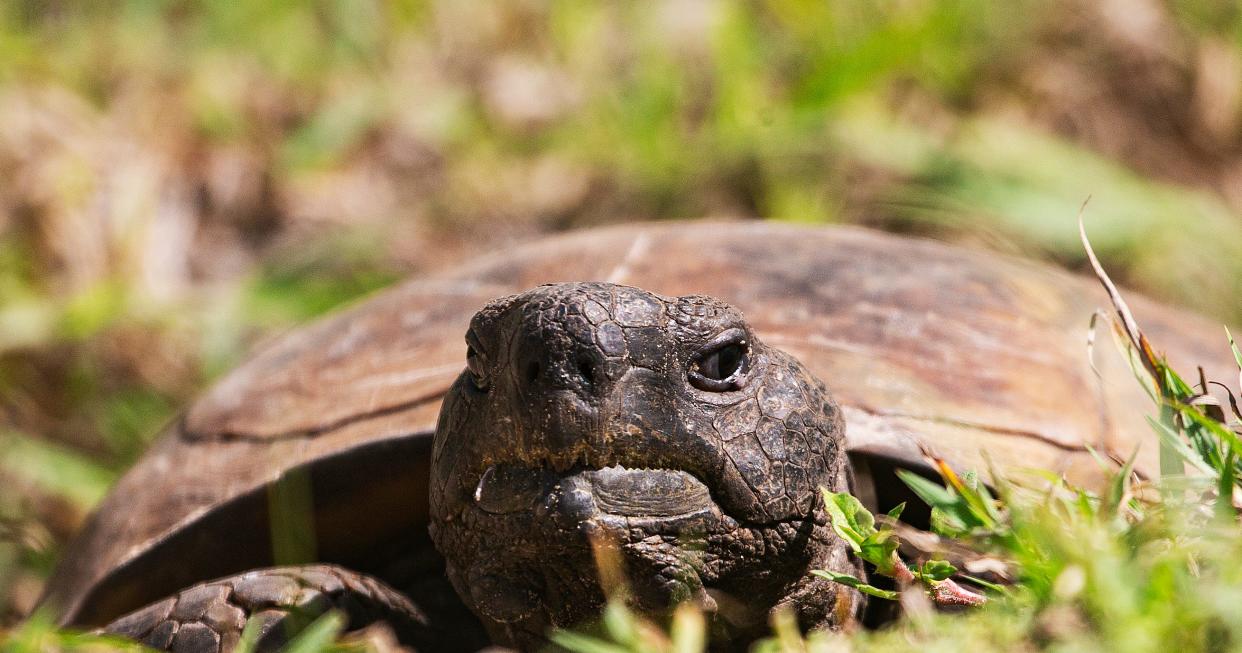With gopher tortoise projections 'really harrowing', nonprofits sue over protections

Federal scientists admit gopher tortoises are in deep trouble.
A 2021 study by the U.S Fish and Wildlife Service, the agency that administers the federal Endangered Species Act, concluded that by 2100, some three-quarters of gopher tortoise populations could be gone. Yet despite their own dire survival predictions, the agency denied them the act’s protections.
That’s why on Wednesday, two nonprofits, the Center for Biological Diversity and Nokuse Education Inc., a conservation group in the Panhandle, sued the service for failing to protect eastern gopher tortoises – the kind that live in Florida.
The agency will not comment on the action. Reached by phone, spokeswoman Jennifer Koches said, “Per service policy, we cannot comment on proposed or pending litigation."
Here are four things to know about the suit.
When the feds were asked to explain their denial, they wouldn’t
In March, the nonprofits petitioned the agency to outline why it wouldn't grant the tortoises Endangered Species Act Protection, and they threatened to sue if they didn’t.
More: Gopher tortoises in Florida: Nonprofits plan to sue for federal protection
“We notified the agency of significant deficiencies with their analysis, particularly the fact that they had found overwhelming past declines and projected really overwhelming future declines for this species,” said Elise Bennett, Florida director for the Center for Biological Diversity. The outlook is "really harrowing ... yet (they) determined it shouldn’t be protected.”
Plus, the center found “pretty significant concerns with the way they had done their analysis that indicated things may actually be much worse for the species than their analyses showed,” Bennett said. "If you look at the science and you look at their decision, thing just aren’t adding up (so) we wanted them to explain the discrepancies."
In May, the nonprofits got their answer: No.
"They essentially they said: ‘We believe our decision is right and we stand by it," Bennett said.
Once again, the nonprofits got back in touch, with the "same exact concerns we sent the notice about," Bennett said. The difference this time? “Now we’re going to bring it before a court."
No one denies that gopher tortoises are in trouble
The federal wildlife service admits the species faces steep challenges. In its comprehensive report published in 2021, its models projected sharp population declines. By its own analysis, three quarters of them could gone in less than a century. Chief among their challenges: The high-and-dry uplands they favor are also sought-after human habitat. When animals compete with humans for building sites, “the animal normally loses,” said herpetologist Chris Lechowicz, Sanibel-Captiva Conservation Foundation's wildlife and habitat management director told The News-Press in March.
The longleaf pine savannas they once inhabited are already 97% gone, and as people move into the remainder of their homelands, the tortoises also lose food and the ability to move safely from area to area.
Florida protects them, but the protections don’t seem to be working.
Gopher tortoises are a protected species in Florida. That means that proposed development in tortoise habitats must get a permit and safely relocate them. But state law offers no habitat protections, which means the reptiles "are being squeezed into increasingly smaller areas of available habitat," Bennett said. "Combined with booming development, (that) has led to shortages of suitable places to put relocated tortoises." Florida's Fish and Wildlife Conservation Commission has long struggled to find places to put those in the path of development, and state law is "clearly not adequate," said Matthew Schwartz, executive director of South Florida Wildlands Association.
Pro-developer, anti-tortoise? New Florida rule weakens protections of threatened species
The suit is about more than gopher tortoises
Many other animals depend on gopher tortoises, which is why they're called a keystone species.
They support many other animals by digging burrows that provide homes for dozens of other creatures, thus playing an oversized role in the health of natural systems. Plus, many of the species, like the eastern indigo snake which depend on their burrows, are federally listed, making federal protection even more critical, advocates say.
This article originally appeared on Fort Myers News-Press: Gopher tortoise outlook 'really dire'; feds must protect them, suit says

